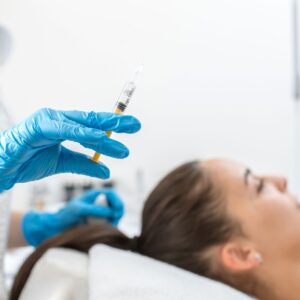For individuals living with diabetes, wounds are more than just minor injuries. Diabetic ulcers — often found on the feet or lower legs — can develop from small cuts, blisters, or pressure points and, without proper care, lead to severe infections or even amputations. The wound care San Antonio diabetic ulcer programs provide are designed to prevent these outcomes by addressing the unique healing challenges faced by diabetic patients.
The wound care San Antonio diabetic ulcer programs provide are specifically tailored to address the unique healing challenges diabetic patients face. Specialists use a combination of advanced wound dressings, infection control, and therapies to stimulate blood flow and promote tissue regeneration. Regular monitoring helps identify complications early, preventing the wound from worsening.
These programs also emphasize education—teaching patients how to inspect their feet daily, choose proper footwear, and manage blood sugar levels, all of which play a vital role in wound prevention. With the right combination of medical expertise and proactive care, diabetic ulcer wound treatment in San Antonio helps protect mobility, prevent serious complications, and improve overall quality of life.
For individuals living with diabetes, wounds are far more than minor skin injuries—they can become serious health risks if not treated promptly and properly. Diabetic ulcers, most commonly found on the feet or lower legs, often start from something as small as a blister, cut, or area of constant pressure. Due to poor circulation and reduced sensation (neuropathy), these wounds may go unnoticed and heal slowly, increasing the risk of severe infections. In advanced cases, untreated diabetic ulcers can lead to tissue damage, hospitalization, and even amputation.
Why Diabetic Wounds Heal Slowly
Diabetes can cause:
-
Poor Circulation: Reduced blood flow slows the delivery of oxygen and nutrients to the wound.
-
Nerve Damage (Neuropathy): Numbness prevents you from feeling pain, leading to unnoticed injuries.
-
Weakened Immune Response: The body struggles to fight off bacteria.
-
High Blood Sugar Levels: These impair the body’s ability to repair tissue and increase infection risk.
This combination makes timely wound care San Antonio services critical for diabetics.
Types of Diabetic Ulcers
1. Neuropathic Ulcers
Caused by nerve damage, often painless but prone to infection.
2. Ischemic Ulcers
Result from poor blood circulation, making them slow to heal.
3. Neuroischemic Ulcers
A combination of nerve damage and poor circulation, posing the highest risk.
The Dangers of Ignoring Diabetic Ulcers
If left untreated, diabetic ulcers can lead to:
-
Severe infections
-
Gangrene
-
Bone infections (osteomyelitis)
-
Amputation of the affected limb
-
Life-threatening sepsis
Prompt professional wound care San Antonio services significantly lower these risks.
Core Principles of Diabetic Wound Care
1. Early Detection
Regular foot checks help identify small wounds before they worsen.
2. Infection Prevention
Proper cleaning, antimicrobial dressings, and monitoring prevent bacterial growth.
3. Offloading Pressure
Special shoes, inserts, or casts reduce pressure on the wound area.
4. Blood Sugar Control
Keeping blood sugar within healthy limits accelerates the healing process.
5. Circulation Improvement
Physical therapy, exercise, and sometimes vascular treatments help improve blood flow.
Advanced Treatments Used in Diabetic Wound Care
Debridement
Removing dead tissue to allow healthy tissue growth.
Specialized Dressings
Moisture-balanced dressings keep wounds clean and promote cell repair.
Negative Pressure Wound Therapy (NPWT)
A vacuum-assisted device that helps close wounds faster.
Hyperbaric Oxygen Therapy (HBOT)
Floods tissues with oxygen to speed healing and fight infection.
Bioengineered Skin Substitutes
Encourages new tissue formation for hard-to-heal wounds.
The Role of Nutrition in Healing
A diet rich in lean protein, vitamin C, zinc, and hydration supports the body’s ability to regenerate skin and tissue. Many wound care San Antonio specialists also recommend nutritional counseling for diabetic patients.
Preventing Diabetic Ulcers
-
Inspect feet daily for cuts, blisters, or redness.
-
Wear properly fitting shoes and socks.
-
Keep feet clean and moisturized (but avoid excessive moisture between toes).
-
Avoid walking barefoot.
-
Schedule regular foot exams.
The Importance of Patient Education
One of the biggest challenges with diabetic ulcer care is patient awareness. Many diabetics do not realize a wound exists until it becomes severe. Educational programs focus on early detection, lifestyle habits, and recognizing warning signs.
Recovery Timelines for Diabetic Ulcers
Healing time varies depending on:
-
Ulcer size and depth
-
Patient’s overall health
-
Blood sugar control
-
Presence of infection
Some wounds heal in a few weeks, while others may require months of consistent care.
FAQs About Diabetic Ulcer Wound Care in San Antonio
Q1: Can I treat a diabetic ulcer at home?
No, diabetic ulcers require professional evaluation to avoid complications.
Q2: Will I need surgery for my ulcer?
Surgery is only considered for severe cases where infection or dead tissue cannot be managed with standard wound care.
Q3: How often will I need to see a wound care specialist?
Most patients require weekly visits until the wound shows significant improvement.
Q4: Can diabetic ulcers come back after healing?
Yes, especially if blood sugar remains uncontrolled or preventive steps aren’t followed.
Q5: Does insurance cover diabetic ulcer wound care?
Most insurance plans cover necessary wound care treatments, but coverage varies.
Conclusion: Protecting Your Health with Prompt Care
Diabetic ulcers should never be ignored. The wound care San Antonio services dedicated to diabetic patients combine advanced technology, patient education, and personalized treatment to prevent complications and save limbs. By seeking help early, managing blood sugar, and following professional advice, diabetics can protect their health and maintain mobility.




